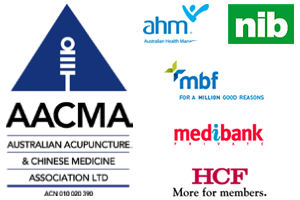In vitro fertilization (IVF) live birth success rates may increase with traditional Chinese medicine adjuvant care, including both acupuncture and herbal medicine. In this retrospective cohort study, researchers reviewed 1,231 IVF patient records and compared live birth outcomes for patients receiving IVF only and patients receiving IVF plus Chinese medicine.
Acupuncture was combined with Chinese medicine dietetics, lifestyle, and nutritional recommendations, and if appropriate, Chinese herbal medicine. The research team used the term whole-systems traditional Chinese medicine (WS – TCM) for the integrated protocol. WS -TCM was compared with two groups: women who underwent usual IVF care, women who elected to have two standardized acupuncture sessions on the day of IVF embryo transfer. WS – TCM was associated with a significant increase in live births compared with both groups.
The live birth rate was increased in both fresh donor and non-donor IVF embryo transfers. In the cycles using donor eggs (N=162), patients who elected WS – TCM care had an 85.7% live birth rate. A live birth rate of 62.5% occured in donor IVF patients receiving only usual IVF care and a 59.5% live birth rate occurred in women who elected day of embryo transfer acupuncture. For women who did IVF with their own eggs (N=1,069), the WS-TCM group’s live birth rate was 61.3% compared with 48.2% in the usual IVF care group and 50.8% in acupuncture group.
All integrated Chinese medicine treatments were individualized to each patient. The researchers note that Chinese medicine focused on regulating the menstrual cycle in four phases for the treatment of reproductive concerns: menses, follicular, ovulation, luteal. During the menstrual cycle, treatment focused on regulating the menses and alleviating dysmenorrhea. The follicular phase focused on regulating reproductive hormones plus endometrial and follicular development. The ovulation phase focused on ovulation induction and the luteal phase involves regulating hormones.
The integrated Chinese medicine care included differential diagnostics and recommendations made by licensed acupuncturists. Acupuncture included both body style and auricular acupuncture. Needles ranged from 0.18 mm – 0.25 mm in diameter and 30 – 40 mm in length for all body style acupuncture points. Several brands of needles were used in the study: Vinco, Sierin, DBC. Electroacupuncture devices were the ES-2 (Heliomed, China) and the Electrostimulator 4c (Pantheon Research, Venice, CA). Tuina massage, moxibustion, and far infrared TDP heat lamps were also used. Herbal medicines were distributed to patients in granular or tablet form, if indicated. Recommendations for supplements included prenatal vitamins, antioxidants, probiotics, and essential fatty acids.
The Oregon College of Oriental Medicine Institutional Review Board approved this study and reproductive outcome data was obtained by the Northwest Center for Reproductive Sciences (Kirkland, Washington) and a private acupuncture practice. Acupuncture was administered by licensed acupuncturists certified by the National Certification Commission of Acupuncture and Oriental Medicine (NCCAOM®).
Patients receiving fresh donor and non-donor embryos were included in the study. The groups were not comparable on all variables but the researchers addressed differences in their analyses. Cycles with pre-implantation genetic screening testing or intracytoplasmic sperm injection cycle patients were included. The researchers note that “all biomedical diagnoses were included” to reduce selection bias. This included FSH issues related to diminished ovarian reserve, antral follicle count concerns and anti-Müllerian hormone concerns. Frozen embryo cycles were excluded from the study.
Reference:
Rubin, Lee E. Hullender, Michael S. Opsahl, Klaus Wiemer, Scott D. Mist, and Aaron B. Caughey. “Impact of whole systems traditional Chinese medicine on in vitro fertilization outcomes.” Reproductive BioMedicine Online (2015).



